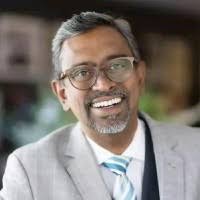By Prof. Satish Jayaram, PhD – Ideator | Innovator | Incubator
A strongly worded reaction appeared like an ultimatum to hospitality education as it drew much attention on social media recently. Private chat groups were abuzz with opinionson kick-starting a set of renewal imperatives. My experienceof a ring-side view over three decades, suggests judiciousbalance to view matters in perspective! The demand supply chasm has clearly widened over time, context may not be completely lost – but content certainly needs an overhaul. Since talent deficits get triggered largely in the front-line workforce domain, exit velocity is a natural outcome. Yet, areall education challenges appropriately represented? Have alternatives been fully evaluated? Do solutions meet multiple stakeholder expectations? And finally, does the process of incubating change, have a 360 degree buy-in? It is therefore prudent, to rationally analyse the case for hospitality education.
Several earlier columns by me on the subject, havedemystified this problem domain from diverse view-points. While curriculum and structure have been a strong bone of contention, the context in which it needs to be viewed matters. The real challenge is currency and quality of content deployedtoday, aside the agility required to implement radical changes. Add to this the degree of flexibility available to open up a cafeteria approach, mid-stream, by offering lateral pathways.Even if adequately provided in the NEP 2020, implementation in institutions remains a linear, not concentric systemic process. Knowledge banks and delivery mechanisms demandresources to curate content – matching education process standards including design, delivery, assessment and evaluation! Empowering and upgrading faculty members to re-build such new bodies of knowledge via design thinking with industry experts, is the only real way forward now, as redundizing the old is mandated.
Logical alternatives open are incremental changes really, many of which are in motion but may not reflect in concert,with the grand scheme of transformation. The incrementalism of this process is both a limitation, yet, perhaps the only possibility. The next alternative is structural changes, which requires renewal within mindsets of traditional academic leadership. Whether with technology, phygital, hybrid, blended or newer lateral approaches, innovation in credit accrual mechanisms must emerge as a fresh alternative. Open learning systems allow for cross-functional and multi-disciplinary credits to be sought from different domains of expertise. Previous columns have expounded considerably on a staggered way to achieve this change. Digital knowledge will remain an open–access repository, limitations includeaccuracy, applicability, credibility, consistency of research versus industry practice. Social media content gains popularity, acceptance and eyeballs irrespective of above considerations.
Hybrid solutions have been incubated, proposed, disseminated and made accessible on open channels. Such a case in point, is MoE’s Swayam Plus initiative with IIT Madras, an expertlycurated set of credit–endowed courses and micro-credentials,currently in initial throes of adoption. Future learning systems will have to invest on digital learning for knowledge transfer.Sharp-skilling laboratories are intensely infusing physical job-ready skills to facilitate early, repeated and prolonged exposure in industry to absorb current practice. Academics working with practitioners to revise curriculum and enhance content with operations is a solution. The economy, industry and business processes, will continue to evolve new content constantly. A potential breakthrough could emerge with high quality joint research and development. This will allow best practices to surface for digital sharing across all user bases. But universal acceptance is key here, consensus building, is the first step!
Many disruptions and action research initiatives in motion,suffer the delay of adoption inertia. While innovation acceptance must go through the adoption curve, resources to facilitate integration remain scarce. Execution suffers constrained by policy, infrastructure, faculty competence, industry co-ordination and above all, collective ownership tofuture–proof bodies of growing knowledge. Cultural, institutional, organizational baggage aside, the first step to take is adapt learning and growing mind-sets. Once possibility thinking becomes a minimum common programme, this impasse can be broken. And by denouncing some fragmented contributions, however glaring, sawing off the very branches that talent sits on, is an unsustainable action – this will cost future generations an opportunity to thrive. The benefits of hospitality education are experienced in multiple sectors that naturally adopt this very valuable skill-set and hone it for their unique hybrid business requirements synthesizing new content.
The demand for millions of talents in the future may hardly be met by the few thousands in institutions today. Truly, the real answer is to grow more institutions in this unique domain, assignature cultural icons of hospitality for this economy. And even as we witness its growth trajectory, abundance thinking would represent greater positivity, than scarcity thinking. After all, shutting anything down in impulse may appearsimpler, until it values the tenacity and contribution of generations, who built a future with vision with little, besidesenterprise. In conclusion, innovation, disruption and change can only be implemented pragmatically. This transition to excellence in hospitality education, is the responsibility of all stakeholders who enjoy its myriad benefits by straddling some of its finest talents.


